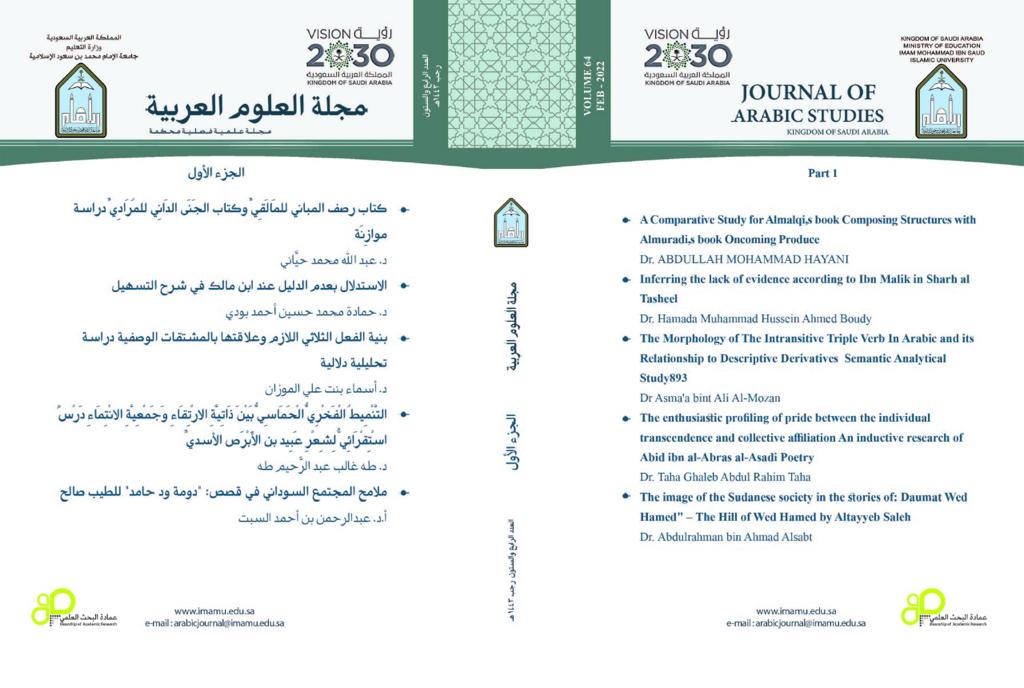The Morphology of the Intransitive Triple Verb in Arabic and its Relationship to Descriptive Derivatives Semantic Analytical Study
Keywords:
transitive verb, structures, privacy, phoneme, semantic morphology, descriptive derivatives.Abstract
The intransitive verb in the Arabic language has special morphologies by which it is known. These morphologies have a relationship with descriptive derivatives such as the noun of the subject, the noun of the object, and the simile adjective.
This research addresses "the morphology of the intransitive triple verb in Arabic and its relationship to descriptive derivatives" with a semantic analytical study. This research aims at identifying the specificity that characterizes the morphologies of the intransitive verb in terms of its phonetic composition and morphological connotations, such as (Yaf'aul) with Dhamah [Arabic short vowel 'u'] on letter Aine ('a), which is originally the present verb for the past verb (Fa'aul) also with Dhamah on letter Aine ('a). This phonetic harmony between them in terms of the presence of Dhamah on Aine letter is evidence of the specificity of (Fa'aul) and limiting. It is an intransitive verb. The Arabic intransitive verb should not be an objective, passive voice mode, except in limited cases. Because of the obligatory relationship between the Arabic intransitive verb and its subject. It also aims at studying the overlap and superposition relationship between morphologies of descriptive derivatives from the chapters of the Arabic intransitive abstract triple verb. The study relied on the descriptive analytical method. Among its results were that this overlap is the result of what the Arabs heard from each other, or because of the similarity or exaggeration in meanings, or because of the desire to differentiate between the chapters of the intransitive abstract triple verb.




